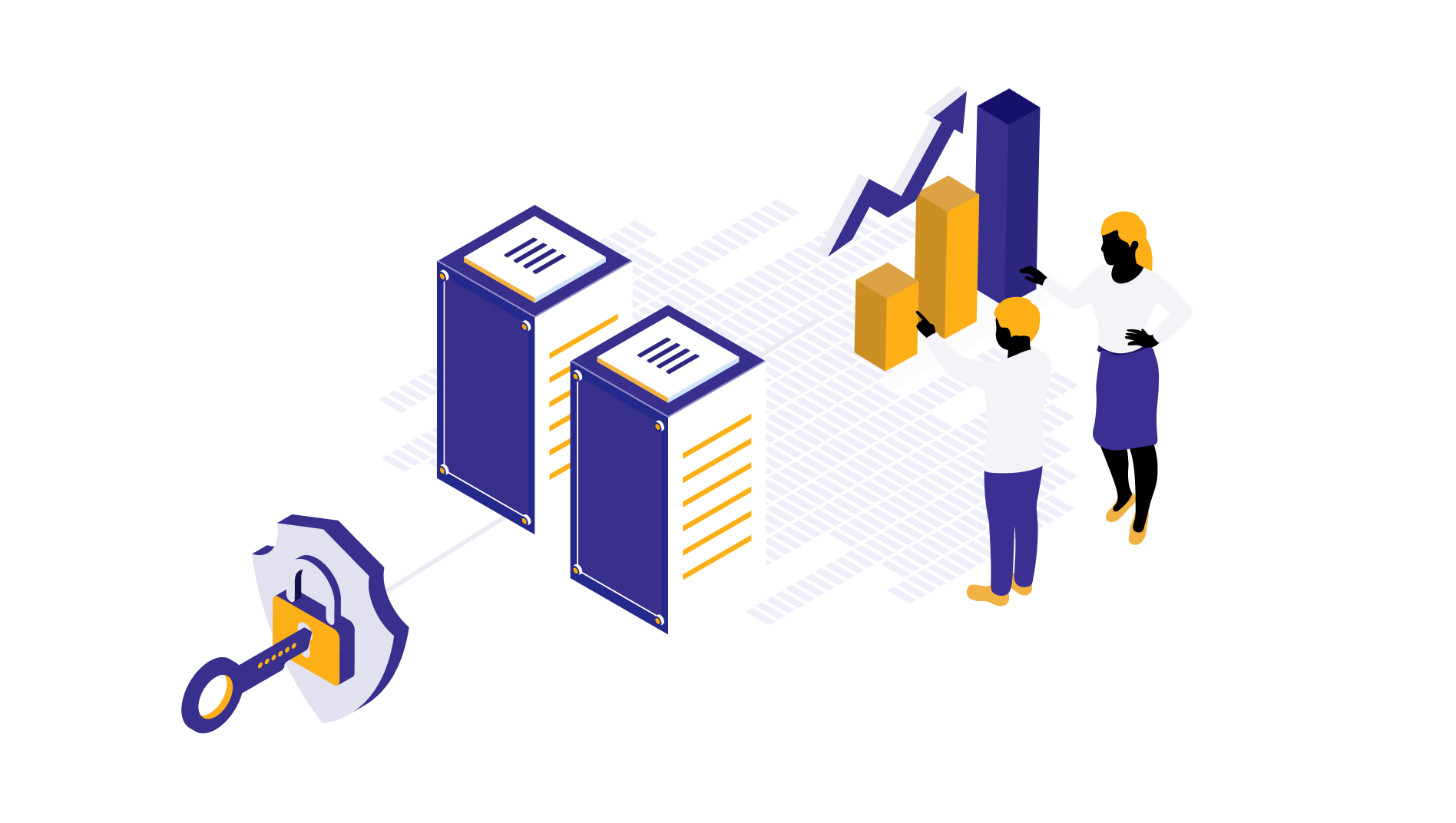How to ensure data quality?
Data quality is paramount, whether you build models or make analytic-driven decisions. Let’s break down how you can maintain good data quality, how to ensure data quality, and important techniques to measure data quality, while overcoming classic data quality issues like duplication.

Ram
Nov 21, 2025 |
8 mins

Root cause of the data quality issues
Data quality issues don’t arise in a day. It’s a result of long-existing poor data practices by users and managing teams.
Some reasons why you notice data quality issues in your organization:
Inconsistent data format
Many transactional data, customer or employee records, finance data, etc come with date columns. As they come from multiple sources, format changes arise with some being dd/mm/yyyy and others mm/dd/yyyy or any other order. These changes, if not corrected and standardized, could mess up your data quality.
Duplicate data
Duplicate data is another common data quality issue, which happens due to disparate and fragmented data sources. It means the same piece of information residing in two or multiple data sets, skewing analytics, or machine learning outcomes.
Miscommunication between the data teams
Miscommunications often occur between different data teams or business users and data teams. It could happen in ways like:
Not having a standardized data format or not educating data users about it
Human errors due to manual data handling and processing
Not following a single, standardized data collection process across the organization.
Poor coordination during data migration processes
Other issues like lack of data ownership, poor change management protocols, inconsistent governance policies, etc.
All the above listed problems mainly occur when a company doesn’t have a standard operating procedure for data management, or doesn’t consider it seriously. When it happens for years, it could cause severe data quality issues that can take up high resources and cost to fix.
Lack of resources and tools
Many growing organizations don’t have modern data management tools. For example, there are easy-to-use tools for master data management, data profiling, data governance, ETL, and data integration. Not using them leads to manual & fragmented data management, which can lead to incorrect, inconsistent, and poor quality data.
Recommended read: What is data anonymization?
How to determine the quality of data?
You can determine data quality through data profiling, data quality checks and validations, internal and external data audits, and appointing data stewards.
Steps to ensuring data quality
1 - Data profiling: the process of analyzing and examining your data and looking for potential issues, anomalies, and quality defects. Profiling will highlight the snapshot of quality issues in any dataset. You can use tools like Excel, SQL queries, or special profiling tools to perform data profiling.
2 - Data quality checks to see if your data meets all quality dimensions, like accuracy, consistency, integrity, format, and others (explained in detail in the next section).
3 - Data audits: every organization must set up internal and external data audits periodically to examine and ensure data quality.
4 - Data stewards can monitor data quality metrics organization-wide or team-wide and address any deviations and quality issues.
Recommended read: What is data fabric used for?
Steps to improve data quality
Want to make considerable data quality improvement? Here is how to get better data for accurate analytics and other use cases.
Data quality standards
Define clearly what constitutes good data quality to your organization (as per your requirements and industry standards) and set data quality standards. Set everything from basics like standard formats, naming conventions, unit usage to advanced things like data integration processes to data quality checks.
Your data quality standards must include at least a few data quality dimensions like completeness, accuracy, consistency, timeliness, uniqueness, validity, etc. Check out more on data quality dimensions in our data quality best practices blog.
Validate your data
Data validation helps with ensuring data quality, no matter what your end goal is - data migration, machine learning, or analytics. By validating your data regularly, you could ensure reliable, accurate, and consistent data to your users.
Here are steps for data validation.
Define objectives that the data must follow and meet based on business requirements. (no repetition of data, must fall within a specific numeric range, etc.)
Use data profiling tools to perform an initial analysis and understand more about its structure, format, etc.
Perform essential data quality checks
1 - Data accuracy check (are the values accurate and are suitable for the real-world context)
2 - Data completeness check (it must not carry any missing or incomplete values)
3 - Data consistency check (checking if it’s consistent with similar data from other datasets and systems)
4 - Data uniqueness check (no duplicate entries for fields that must carry unique values, like name, customer ID, etc)
5 - Data integrity check (validate relationships between two or multiple tables to ensure referential integrity).
Should required, perform any transformations like aggregation, filtering, conversions, etc.
Create data validation reports, summarizing every action performed along with detected anomalies.
Automate data validation for ongoing workflows, changes, or updates performed on the same datasets.
Use data quality tools
It’s not possible to perform data quality checks while maintaining big data use cases. That’s where data quality tools help. Some data quality tools for any organizational sizes or background include Informatica, Talend, and IBM data quality.
Some data quality use cases and relevant tools:
Data profiling tools: data profiling is for data analysis, quick understanding, and summarizing of information. For profiling, you can use tools like Talend, SAS, etc.
Master data management: you can use MDM tools, if you want to maintain a single source of truth across an organization for master data. Some MDM tools include Oracle MDM, Tibco, and others.
Data governance: there are many data governance tools like Collibra and Alation, which help with governance management, stewardship, and classification. Some data governance tools are IBM Infosphere, Trifacta, and others. Here’s a data governance guide for your reference, which could help you with more details.
Other than standard data quality tools, you could also use data integration and ETL tools like Talend and Fivetran to extract data from sources, perform transformations, and load into destinations.
Educate your team
It all starts and ends with data users. Hence, educate your team and data users about standardization policies, data quality checks, and tools through training programs and awareness drives.
Show them the importance and impact of data quality to ensure that they take it seriously. Make your users understand that data quality is never the job of data teams alone. It’s a combined effort from everyone.
Monitor and iterate the process
Once data quality measures are effective, measure its impact through KPIs to make necessary improvements. You could evaluate the effectiveness of tools, protocols, and other standards set and see if it’s helping the end goal. Are there any delays or inconsistencies? Does it require more collaboration among users? Are your datasets meeting all data quality dimensions? Did these measures improve the data quality?
These are some aspects you could evaluate. If there are no issues, you could keep iterating to improve data quality and sustain it.
Final thoughts
Good data quality is a must for making data-driven decisions, improving operational efficiency, and ensuring compliance. With the help of quality checks on data and best practices, your company can ensure data quality and maintain it at the same levels, even if data volumes increase later. By keeping data at ideal data qualities, your team could confidently use data, derive value from it, and find success in their initiatives.
Explore how our data integration engineering services help you fix issues at the source, not after the fact.

by Ram
Ramanathan Somasundaram, shortly Ram, is datakulture’s chief data strategist. He carries a wealth of experience in data analytics, having solved complex business problems and helping them unleash the full power of their data with data-driven solutions. He’s super passionate about the newest tech and industry advances, especially in manufacturing, logistics, and supply chain sectors.



